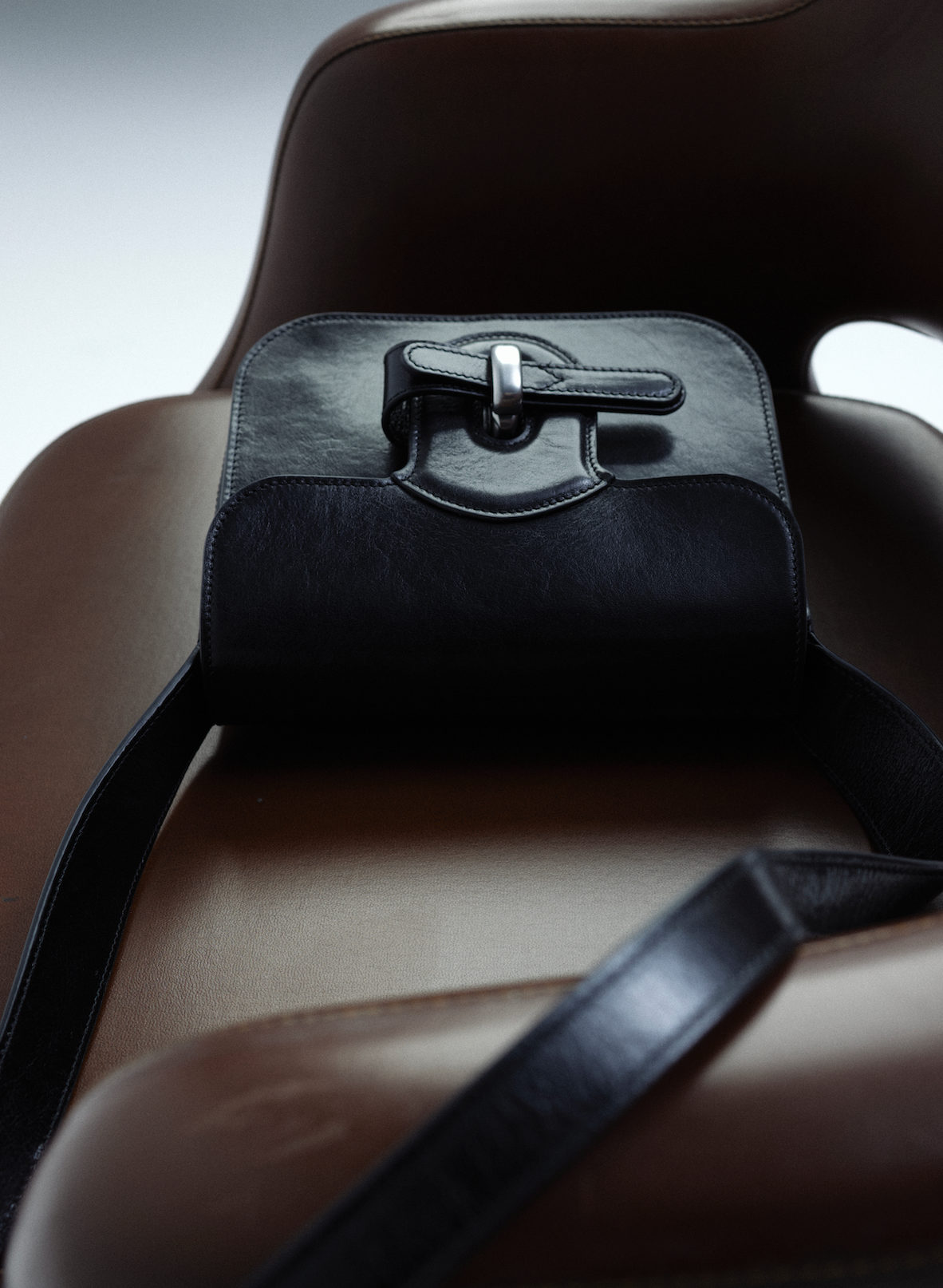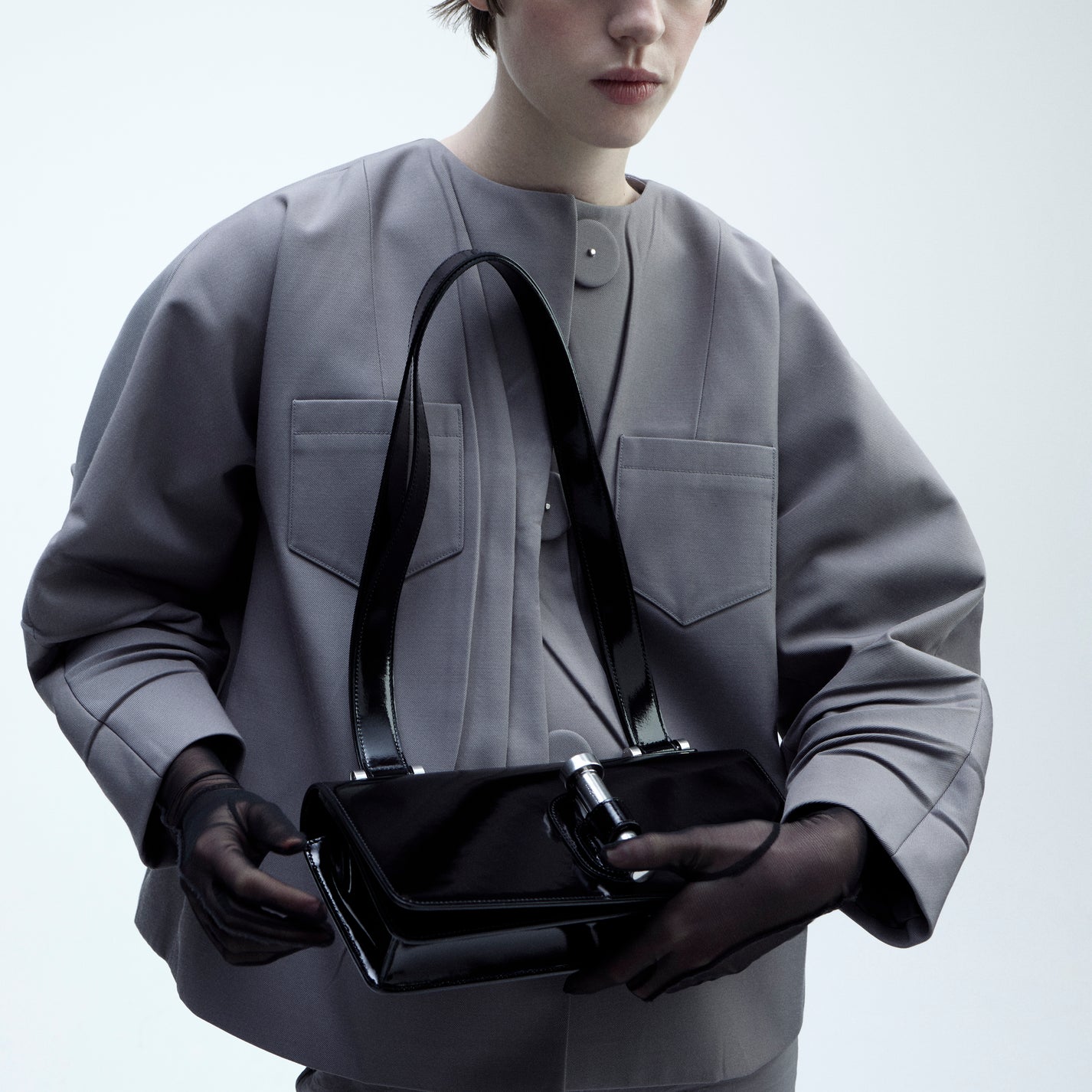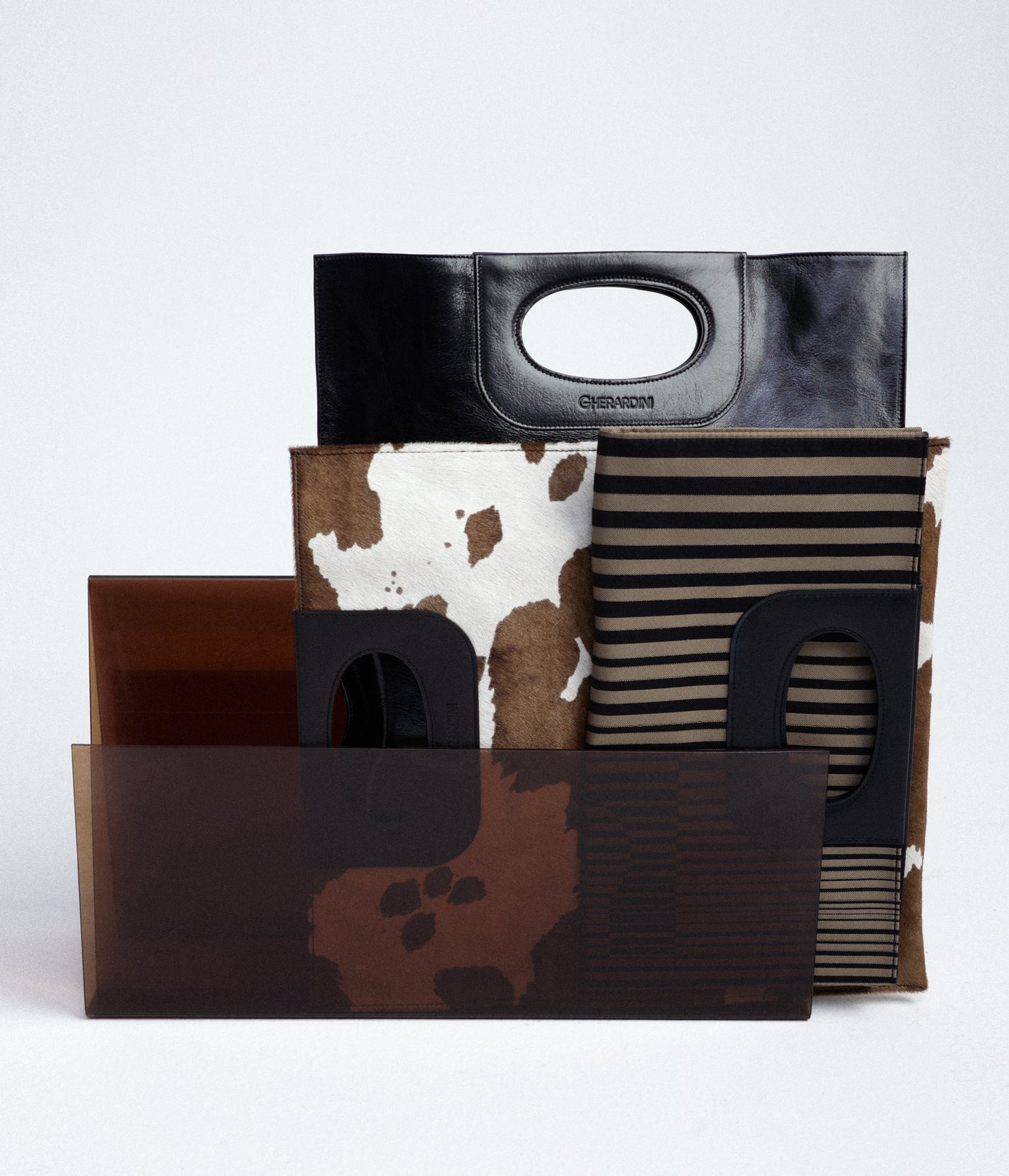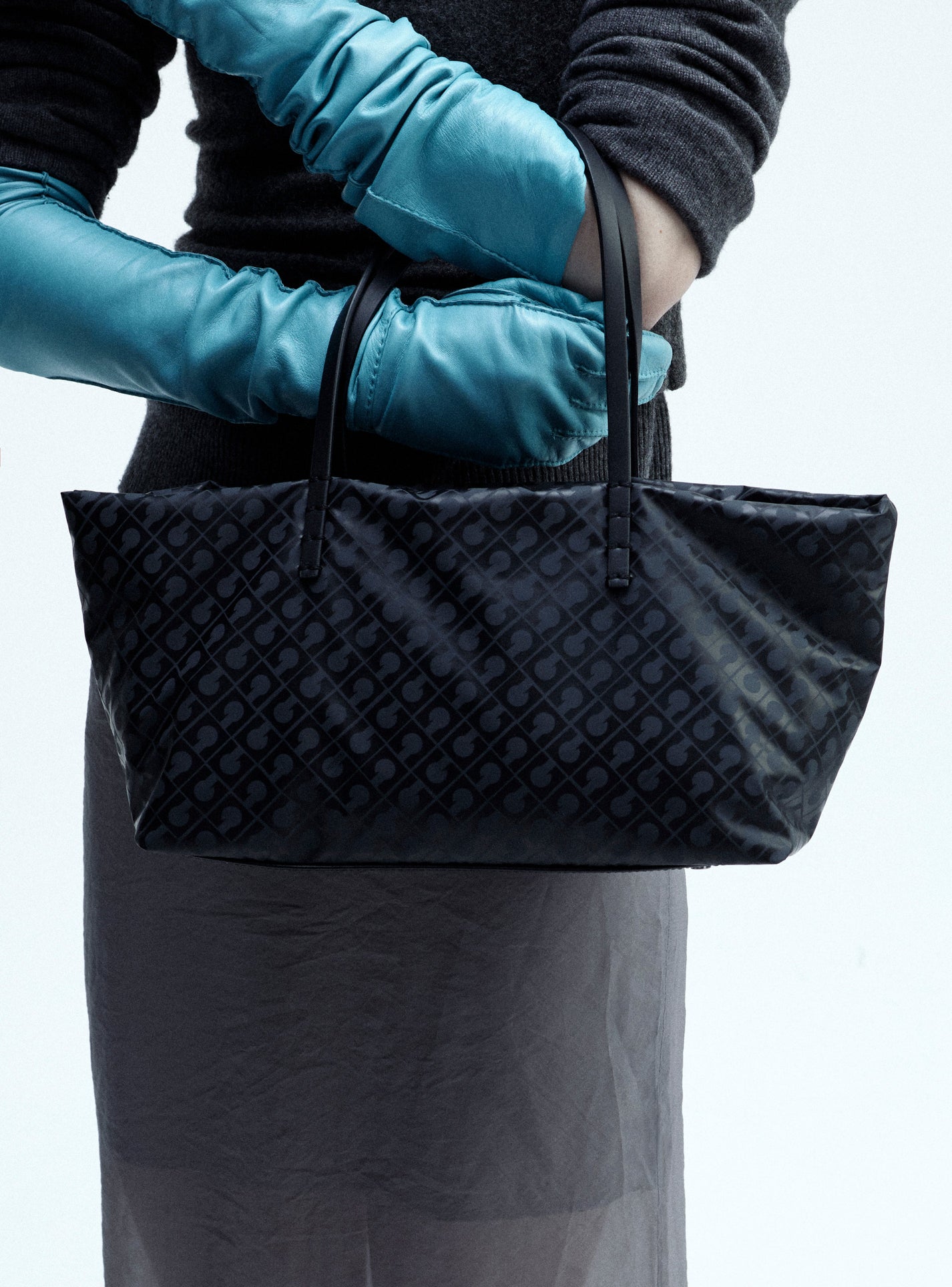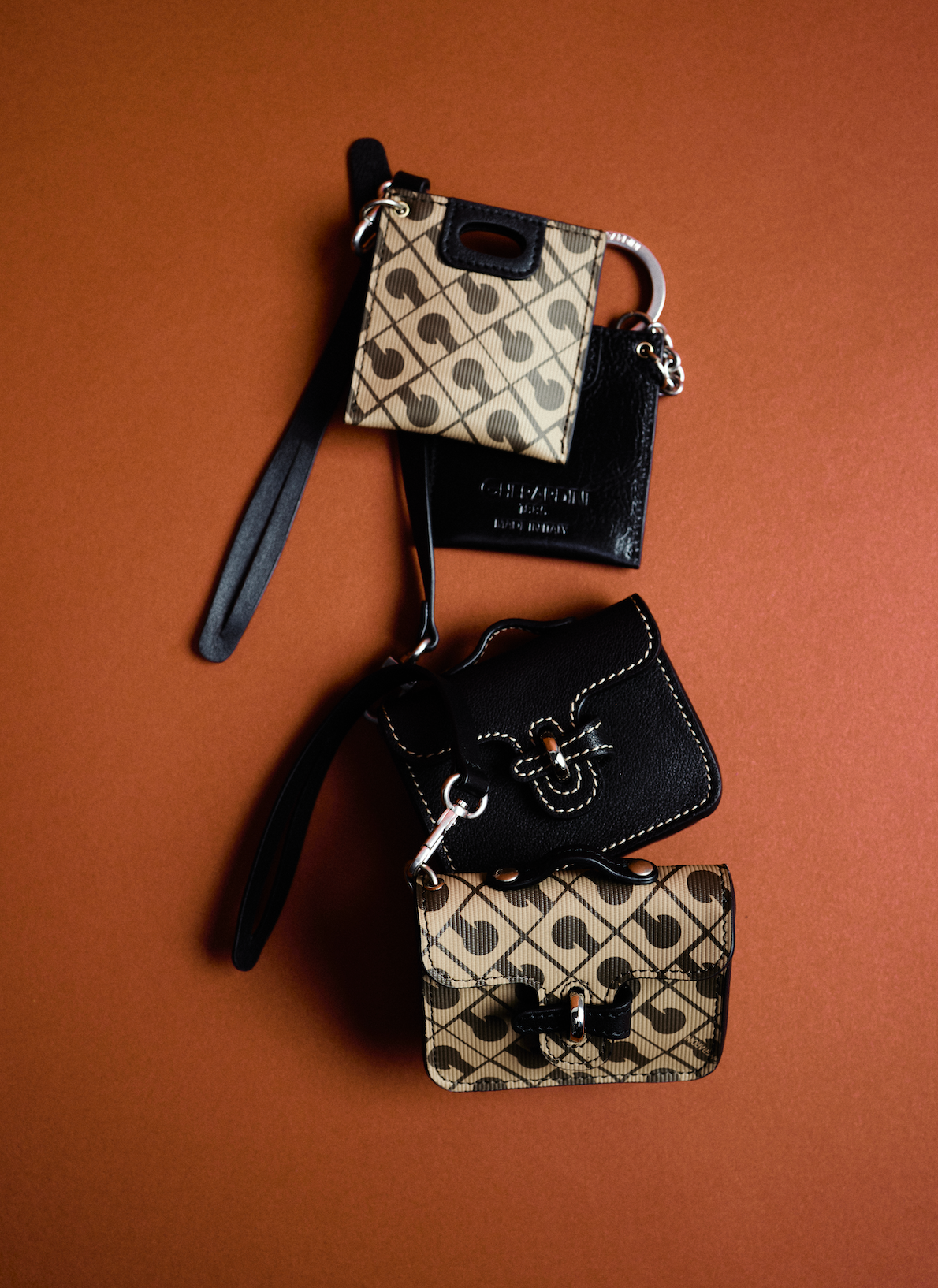
Behind the name 'Gherardini' lies a story of passion, dedication, and a dream.
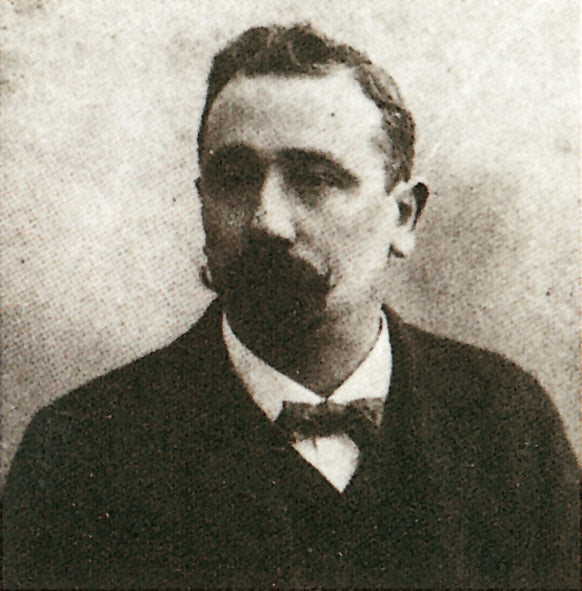
One of a history that spans three centuries and started with one young, 24 year old man who set out to offer exceptional Florentine expression of skill and ingenuity.
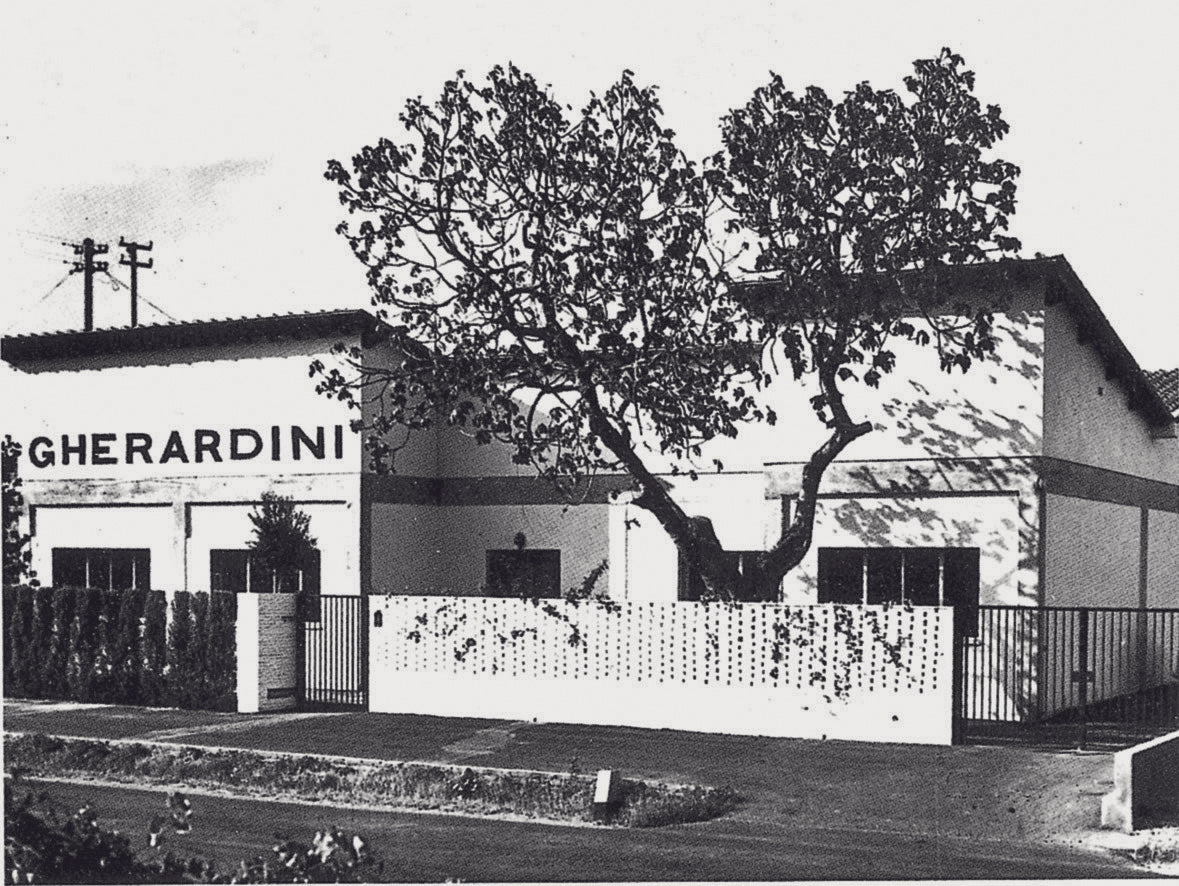
1885
The story of Gherardini begins in Florence — the birthplace of Italian craftsmanship — when Garibaldo Gherardini opened the brand’s first leather workshop. Guided by a vision of elegance and quality, he crafted pieces for an elite clientele, blending traditional Florentine techniques with a modern sensibility that set the foundation for what would become a pioneering house of luxury.
Early 1900s
As one of the first great inventors of Made in Italy, Gherardini learned that his clients had a need not only for pencil boxes and frames, cigarette cases and delicate minaudières, but also a multitude of accessories; which is why he introduced envelope and clutch bags with jewel closures, and the use of brocades, satins, and pleated leathers.

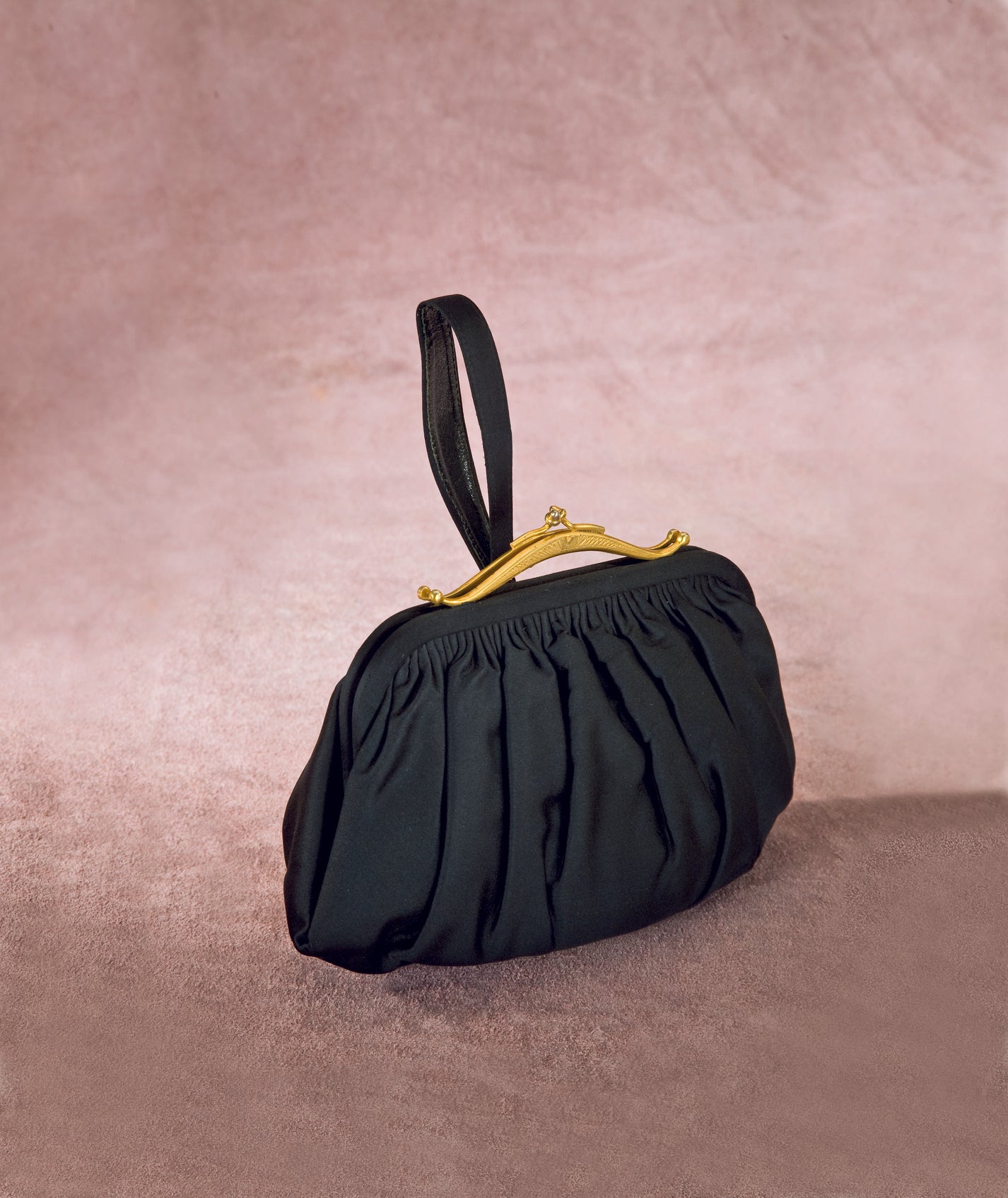
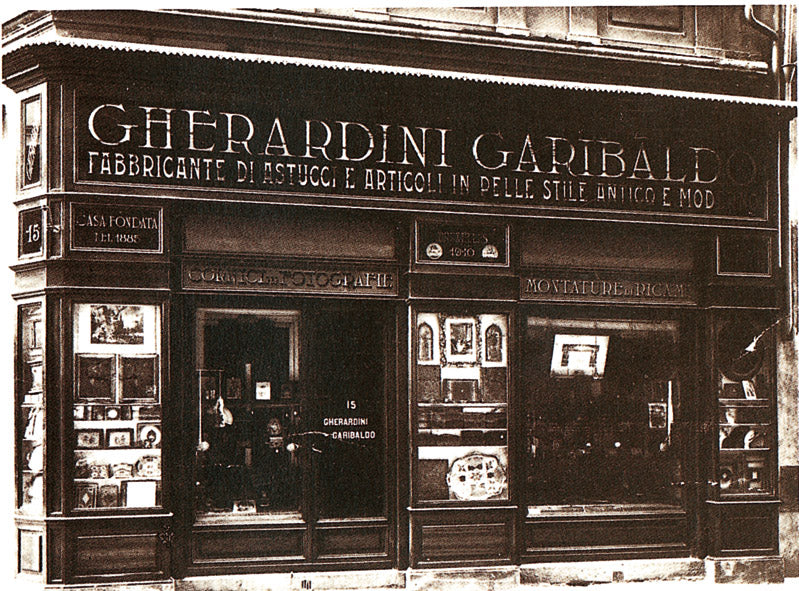

By the early 20th century, the Gherardini name had already become synonymous with refinement. The opening of the first Gherardini boutique in Florence marked a new era for the brand, offering a curated space where discerning clients could experience its artistry firsthand. Located just steps from the city’s historic heart, the store became a destination for those seeking understated sophistication and enduring style.
The Post-War Years
Gherardini began to expand its creative expression as the second generation of the Gherardini's took over expansion efforts. The brand introduced its signature monogram — a geometric reinterpretation of the Gherardini “G” — capturing the elegance of Italian design with a modern graphic identity. Soon after, 'Made in Italy' took off and leather goods production resumed on a large scale.
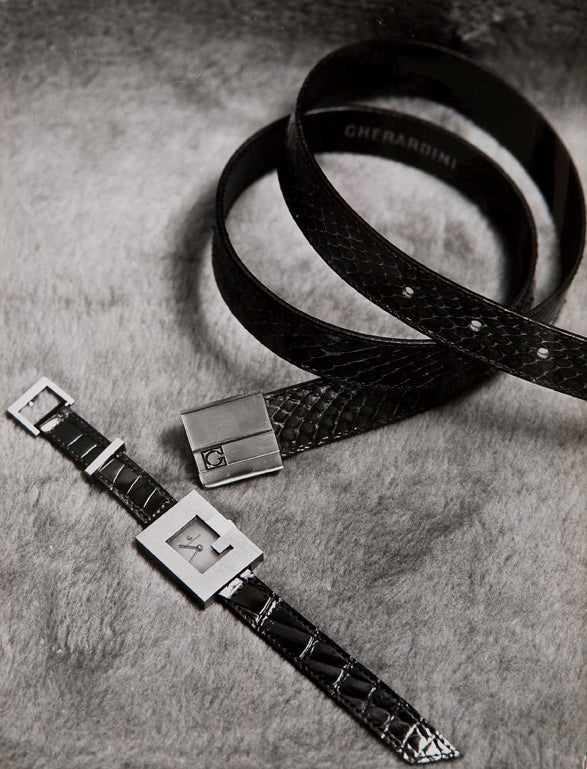
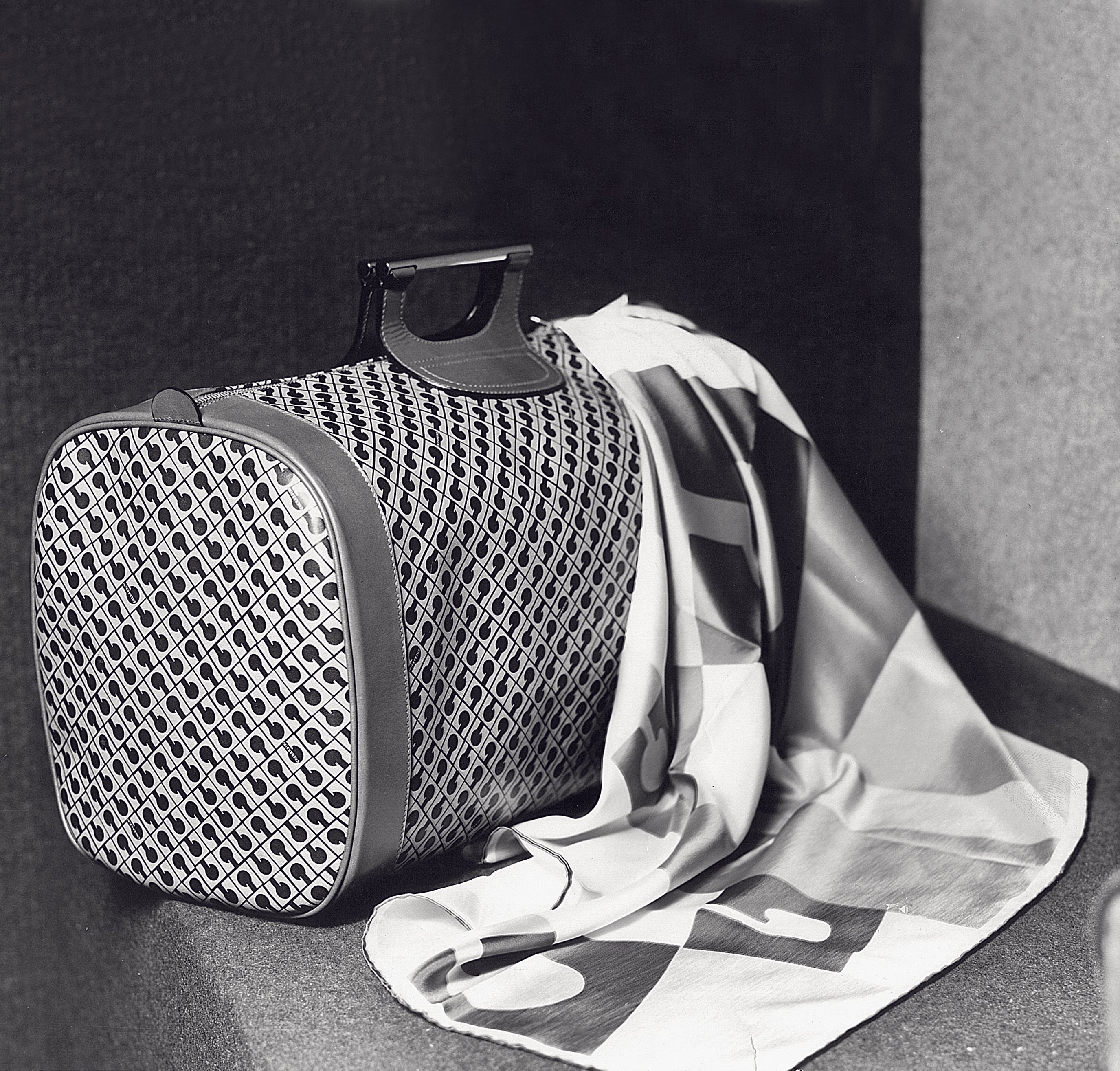
The 60s
As Italian fashion gained international recognition, Gherardini cemented its place among the country’s luxury leaders. The brand took part in its first fashion show, showcasing a collection that merged its leather heritage with a bold new vision for women’s accessories and lifestyle pieces. With designs gracing the catwalk of the Sala Bianca in Palazzo Pitti, this event signaled a new chapter in which Gherardini became, not just a name in fine leather goods but, a creative force shaping the future of Italian style.

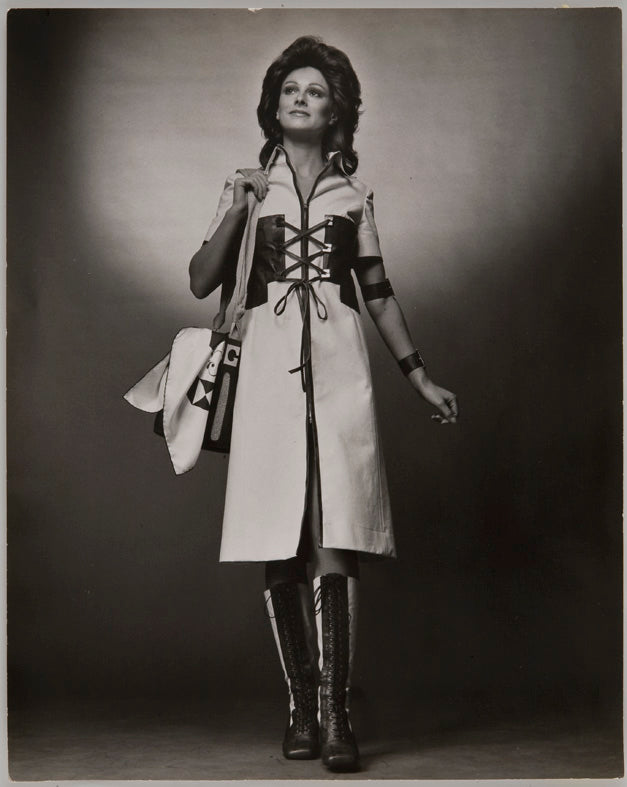

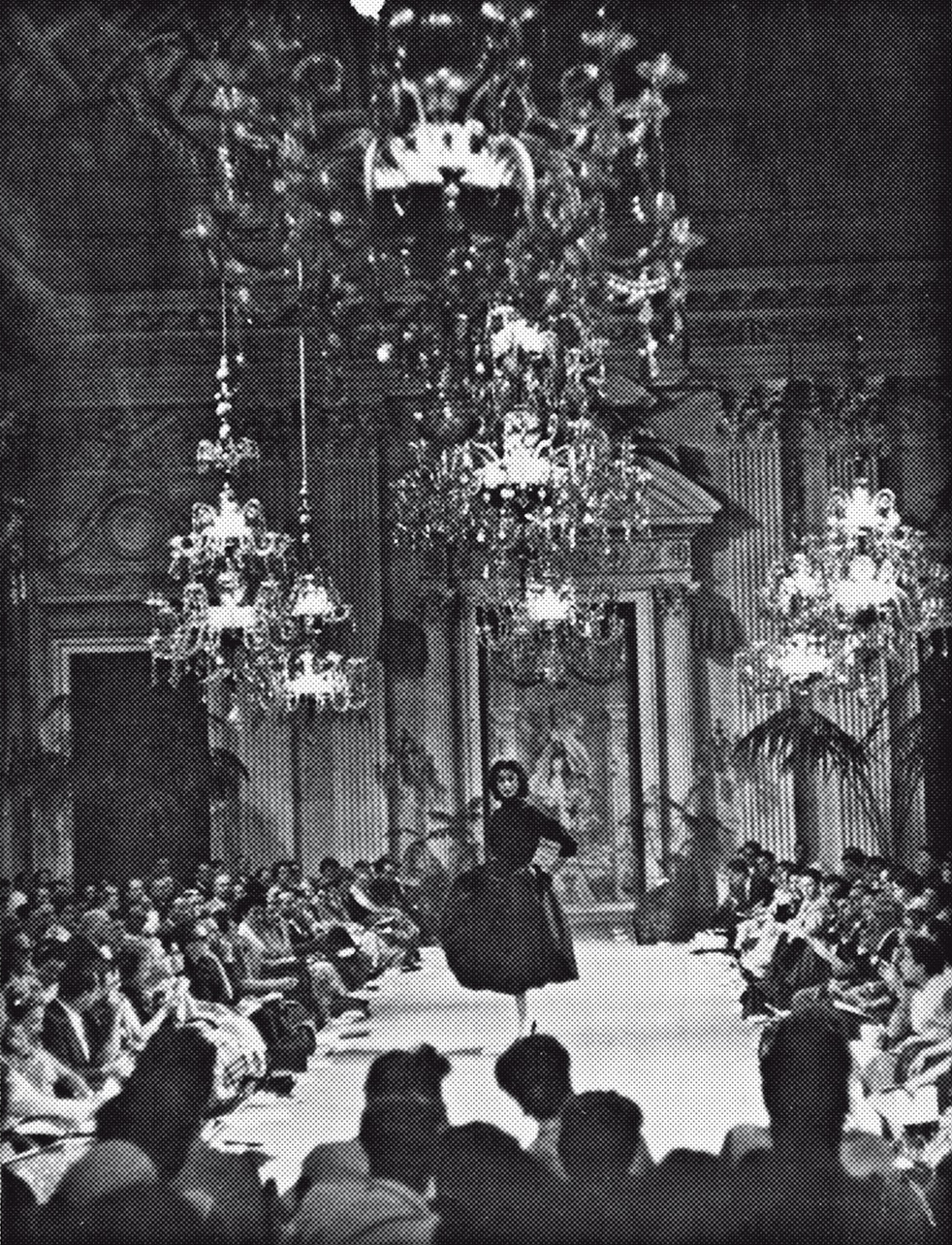
The 70s
Gherardini expanded beyond leather goods, embracing the Total Look with the introduction of ready-to-wear, scarves, and eyewear. This bold move signaled the brand’s evolution from accessories maker to full-fledged fashion house. Each new category reflected the same commitment to elegance, innovation, and Italian craftsmanship. Gherardini was no longer just carried — it was worn, head to toe.
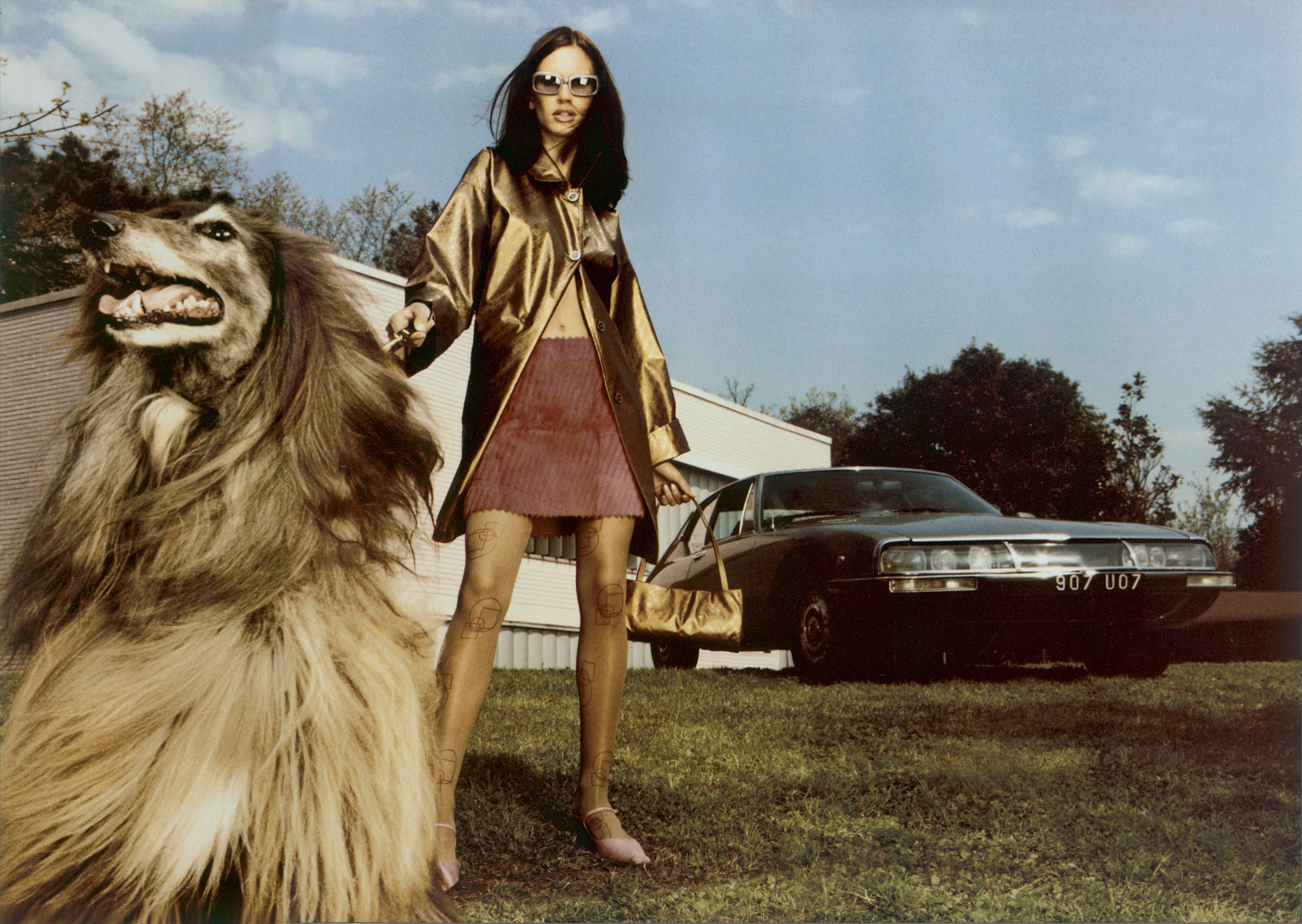
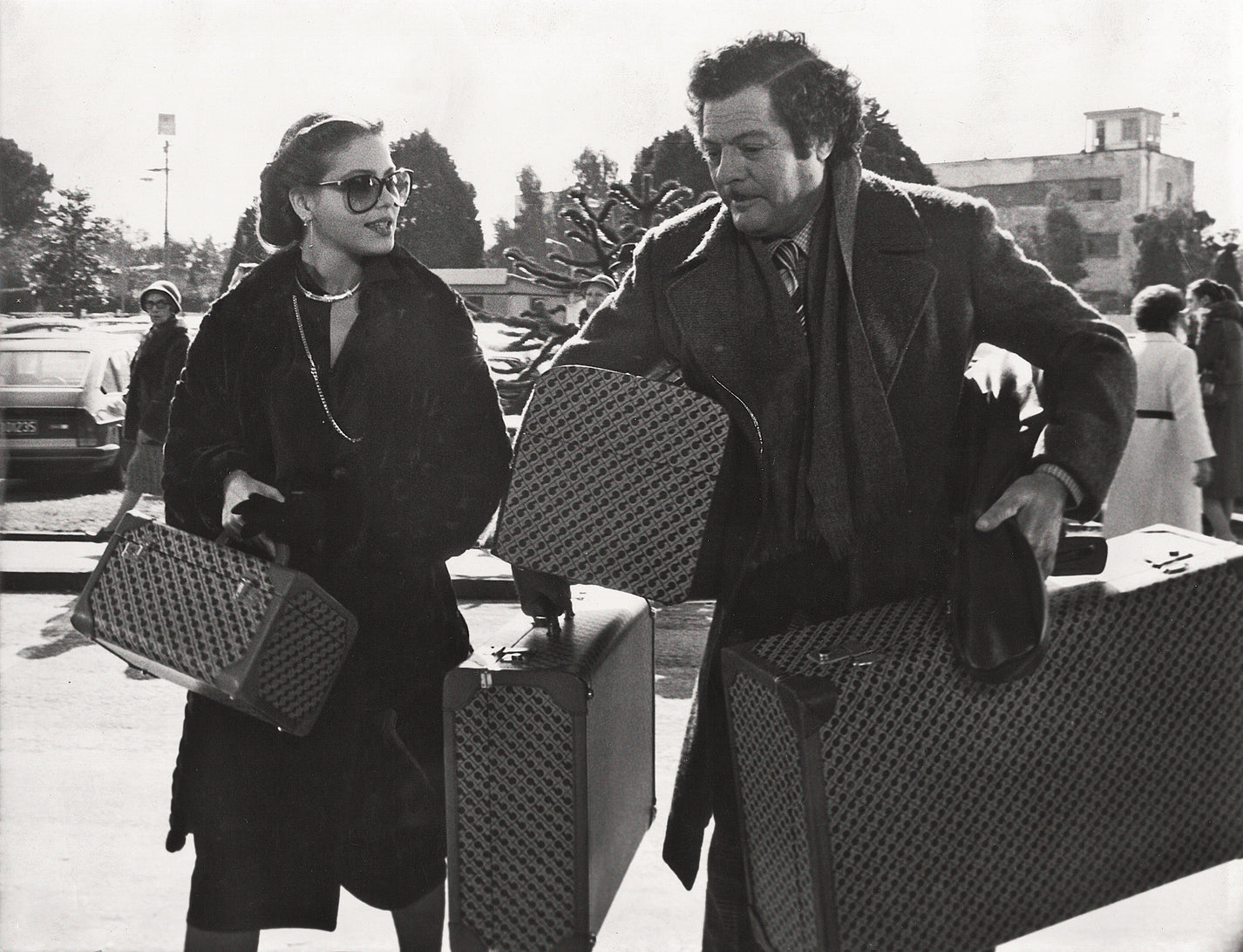
As international travel became more accessible, Gherardini’s monogrammed sets accompanied icons like Marcello Mastroianni and the Duke and Duchess of Windsor from Florence to Cinecittà. To meet the needs of a more mobile, modern lifestyle, the house pioneered Softy — a lightweight, durable, and elegant alternative to traditional leather. Developed in collaboration with Italian engineers, the patented fabric evolved over the decades, becoming Ghe Softy HHR, prized for its strength, flexibility, and resistance to wear.
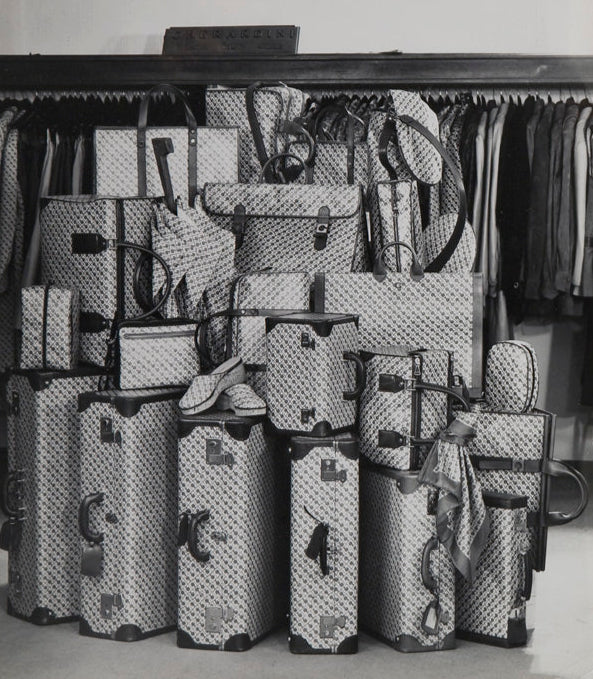
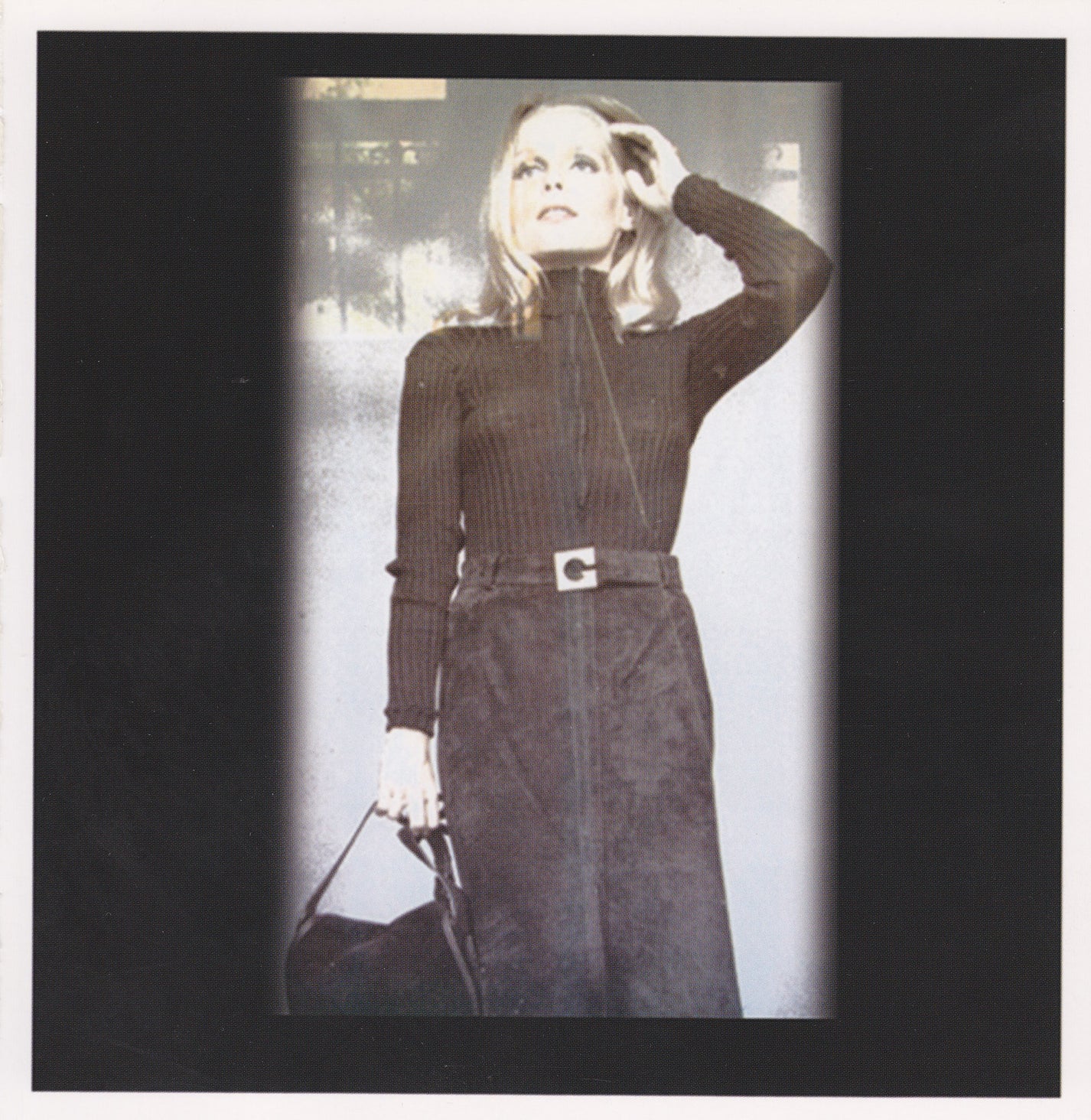
Gherardini took to the runway with a bold new vision of contemporary femininity with the launch of Pitti Donna. The collection featured elegant shirtdresses and trench coats trimmed in fine leather, blending structure with ease. At the center of it all was an icon of the era — Twiggy, the British model whose presence captured the spirit of the time. Her appearance symbolized Gherardini’s growing international influence and instinct for cultural relevance. It was a defining moment that affirmed the brand’s place at the forefront of Italian fashion.
The 80s
Gherardini expanded its world of luxury with a line of accessories dedicated to men. Designed for the modern gentleman, the collection balanced utility with refinement, offering pieces that were both practical and unmistakably elegant. From briefcases to travel bags, each item reflected the house’s commitment to craftsmanship and understated sophistication. This move marked a strategic evolution, extending Gherardini’s signature aesthetic into a broader lifestyle offering. A quiet revolution — one that redefined Italian elegance for a new generation of men.


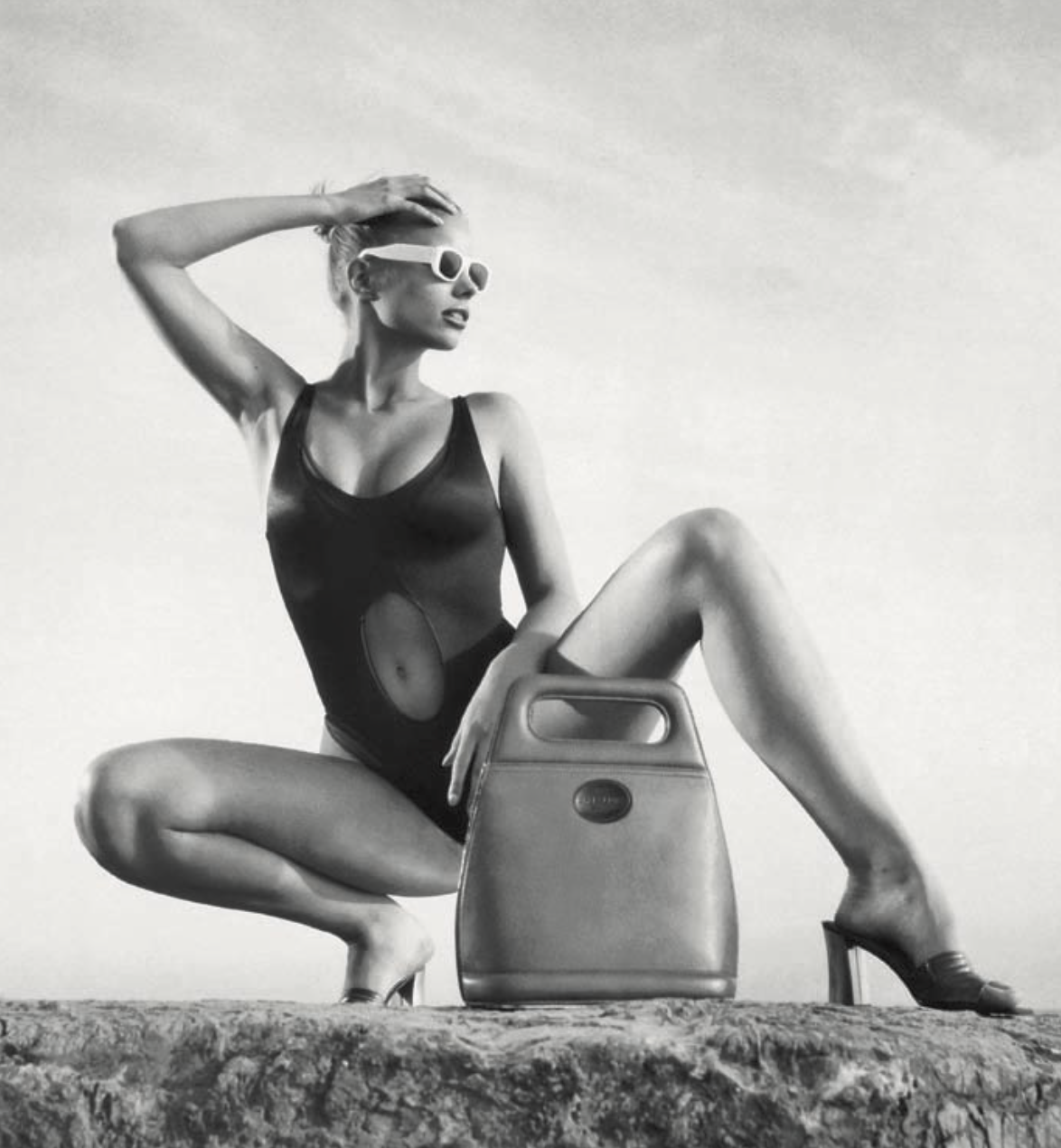

The 90s
Gherardini responded to a more global, mobile lifestyle with lighter, smarter luxury built for everyday elegance. The house evolved its iconic Softy fabric with advanced technologies to enhance durability, lightness, and versatility. The brand refined its signature monogram, reimagining heritage codes for a new global audience. With bold yet timeless designs, Gherardini strengthened its international presence, becoming a symbol of Italian luxury for a generation that valued both tradition and modernity. This decade marked a seamless dialogue between the brand’s artisanal past and its forward-looking vision.

Early 2000s
As Gherardini entered the new millennium, innovation remained central. The house refined its Softy fabric, enhancing durability, flexibility, and everyday performance. New materials like Millerighe brought structure to travel and business pieces, meeting the needs of a faster, more design-conscious world. Expanding its Total Look vision, Gherardini introduced licensed collections of scarves, ties, and umbrellas, extending its elegance into every detail of daily life. To celebrate 125 years of heritage, the brand was honored with an exhibition at La Triennale di Milano and the publication of a dedicated monograph. A refreshed visual identity tied it all together, blending historical richness with a contemporary outlook.
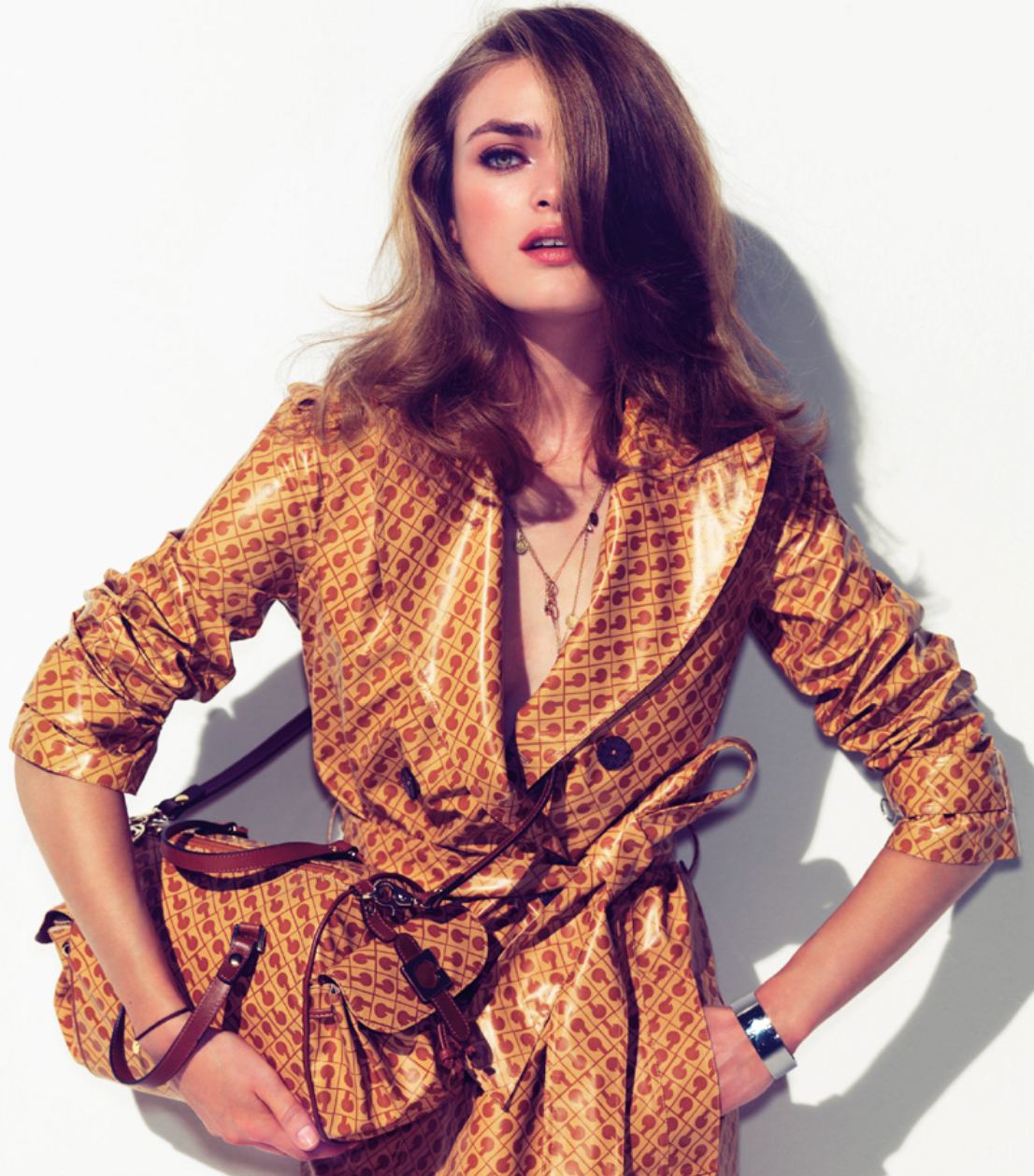
TODAY
Gherardini continues to honor its heritage by reviving archival designs and reinterpreting them with a modern, fashion-forward lens. The brand remains committed to high-quality craftsmanship and the use of prestigious materials, including leather, Millerighe, and its iconic, ultra-light Softy fabric. The signature “G” logo remains a defining design element. With a focus on elevated reinvention, Gherardini blends nostalgia with innovation, appealing to a new generation of style-conscious consumers. The house continues to evolve, expanding its reach while staying true to the spirit that has defined it for over a century.
